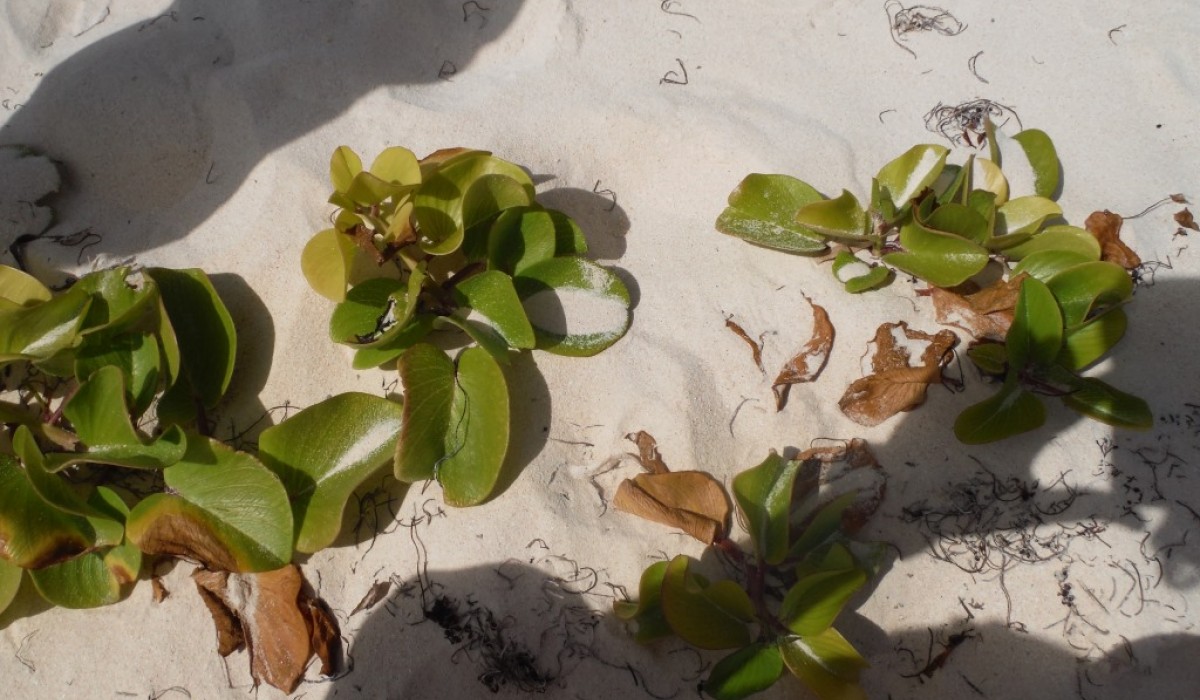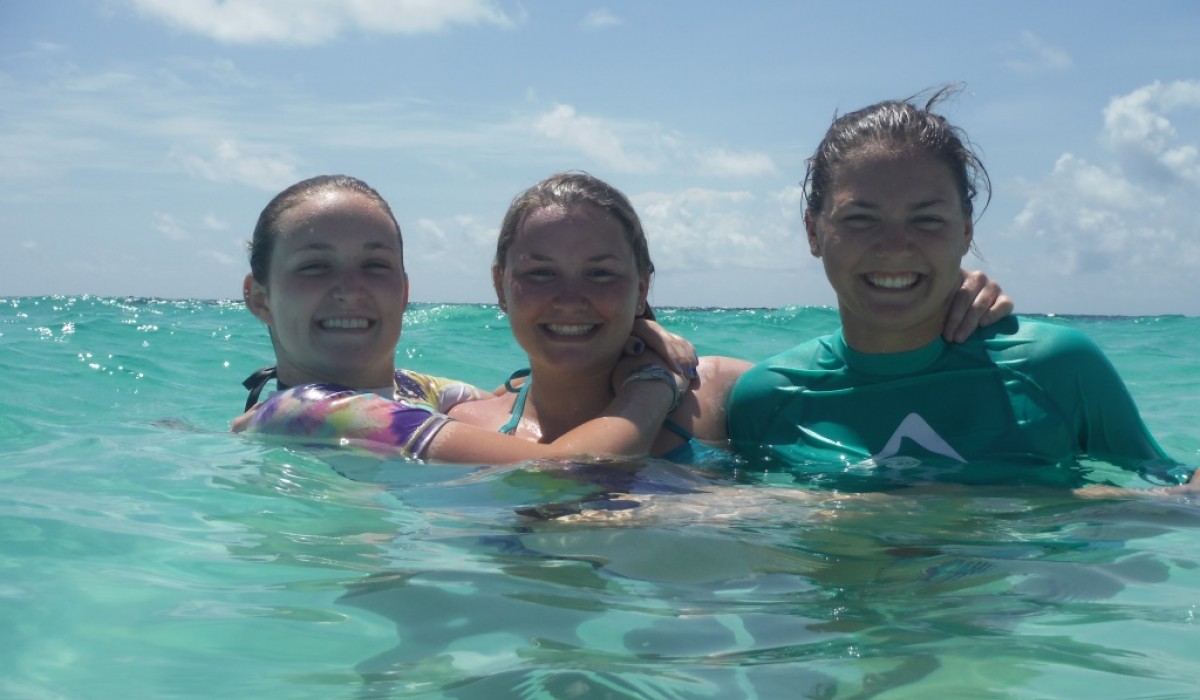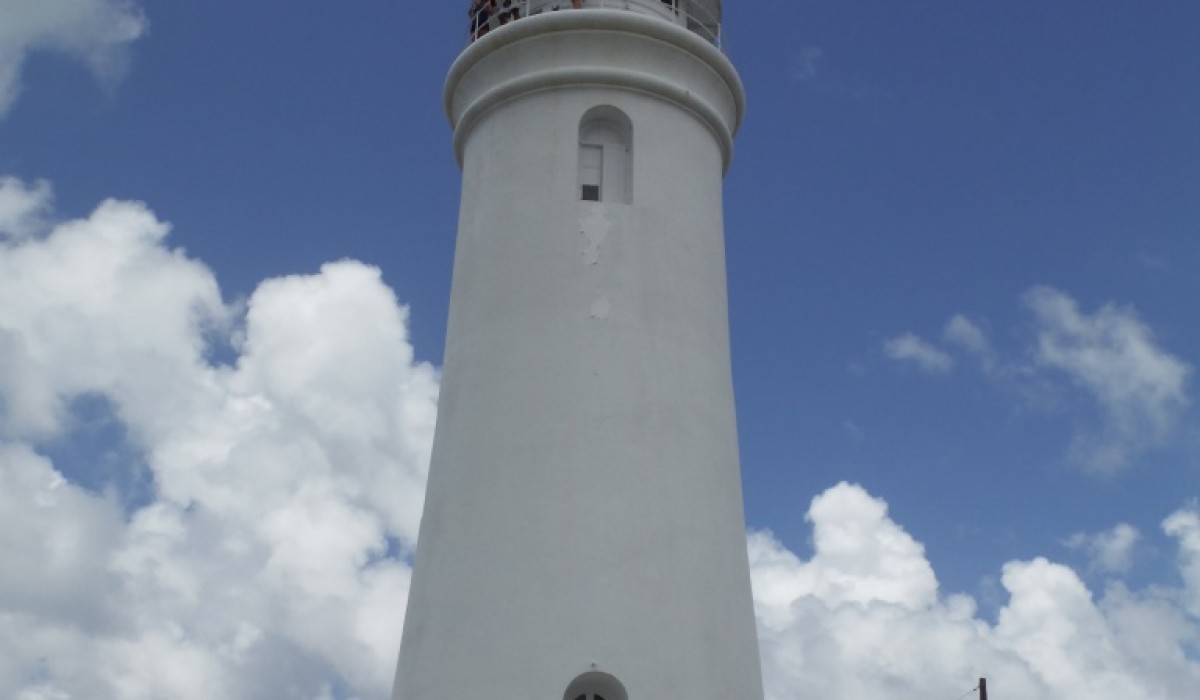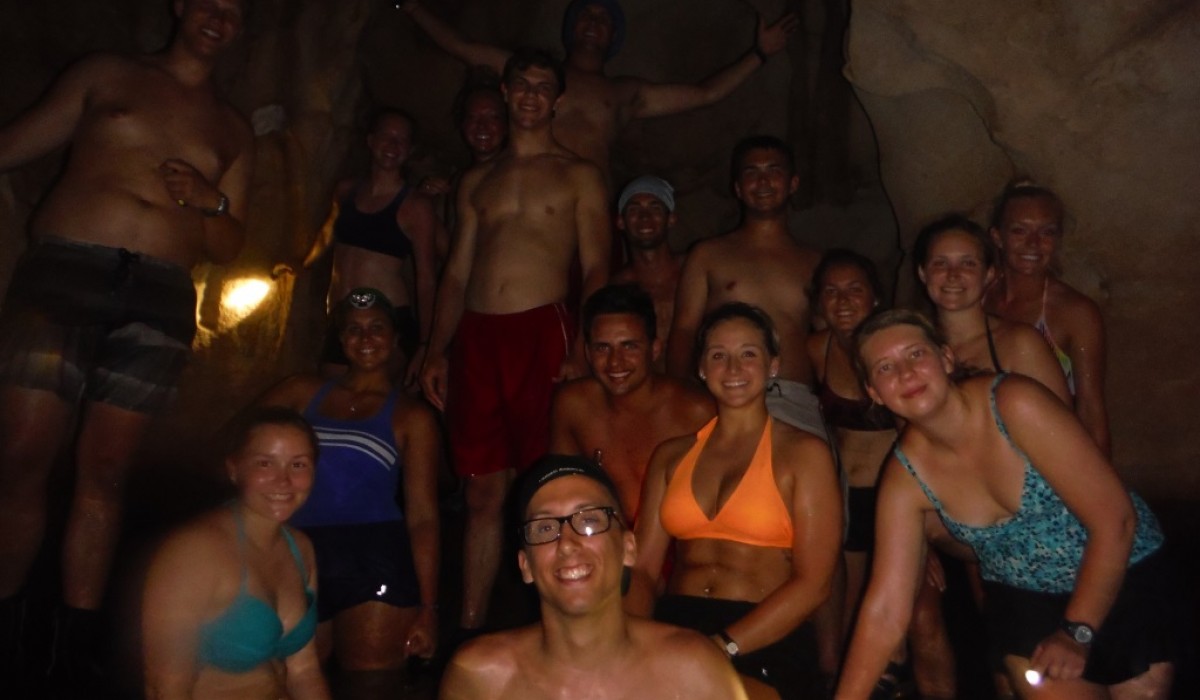Today is Monday, May 26, 2014. We travelled to two different locations today, East Beach and Lighthouse Cave. At East Beach our objective was to observe the open beach community and to identify the different plants present there. Some of the plants we identified were bay lavender, 7 year apple, inkberry, sand spurs, and beach ambrosia. This beach, however, isn’t an ideal habitat for certain species to live in because of the constant wind, excessive waves, and the lack of shade. For this reason, these plants serve as protection to certain organisms. The railroad vine is one particular species of plant that allows for the habitat to exist by anchoring the sand together.
After our identification of plants, we were able to have some time to relax in the water. Most of us could be seen goofing around in the water. This was a lot different from what we’re usually used to during our trips, but it was a nice change. Some of the students chose to get in a quick snorkel at a nearby patch reef where they spotted a Great Barracuda and a Spiny Lobster.
After a filling lunch, we loaded back on the truck and drove to our second location; Lighthouse Cave. We soon found out that this trip required a lot of uphill walking as the lighthouse is the highest point on San Salvador. It is also one of the few lighthouses left in the world that is still manned. As we stood at the top of the lighthouse, we overlooked much of San Salvador. The view was breathtaking.
After touring the lighthouse, we encountered another trek to get to the cave. We walked over rocks and through brush until finally reaching the opening of the cave. We learned that this cave was formed by the dissolution of calcium carbonate. During our walk, or rather swim through the cave, we encountered many bats who weren’t very pleased with our bright flashlights and loud voices. We waded through sometimes shoulder deep freshwater and over rocks. Once we were deep enough into the cave that natural light couldn’t be seen, we all turned off our flashlights and experienced the chilling effect of total darkness. This was something not many people will ever get to experience, and it was definitely worth it.
Back at the field station, we had class that consisted of a presentation about the habitat and organisms of a site called Bonefish Bay. We also learned about the geology of the islands of The Bahamas which is quite unique. These islands aren’t formed by volcanic rock, but actually by calcium carbonate.
Our adventures up to this point have been an amazing experience that each one of us is lucky to have. We’re excited to see what’s in store for us during the rest of our trip!
Courtney Dunlap ’17 and Erin Hord ‘17





